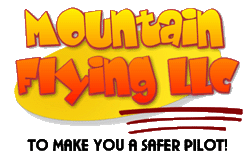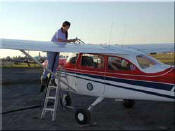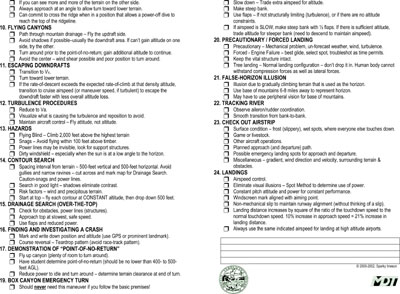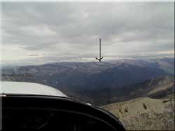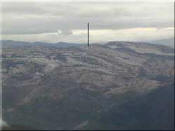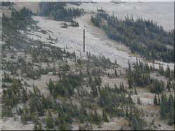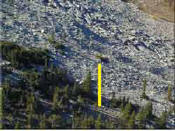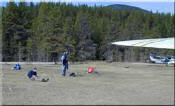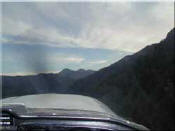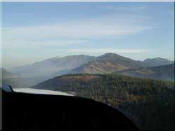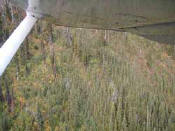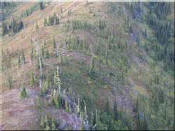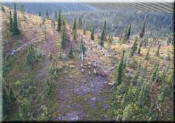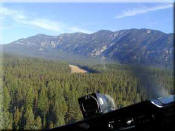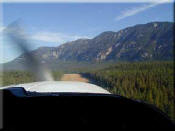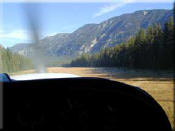Montana Search Pilot Clinic 2002

Each September about 30 volunteer pilots from the State of Montana congregate for a grueling weekend of search pilot training. The "students" (many are experienced mountain pilots) devote their time and energy and pay a small fee for the privilege.
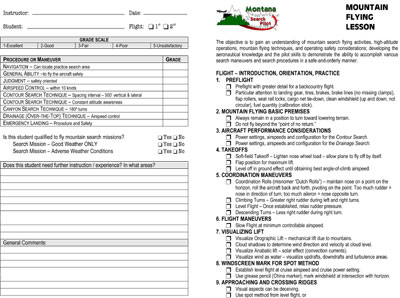 The
course begins on Friday evening with an introduction and ground
school.
The
course begins on Friday evening with an introduction and ground
school.
Saturday finds the group divided where some go to flight training and others participate in ELT training and hands-on survival skill training.
For the flight training, six airplanes are used. Three students accompany an instructor and fly to a staging airport. Two students are dropped off to wait their turn to complete the search lesson. Students receive two hours of flight instruction, one hour each from a different instructor. Scheduling generally has the student fly once on Saturday and once on Sunday.
The lesson plan is available as an Adobe pdf file (127 KB) download
Jeanne MacPherson, Montana Aeronautics Division,
Bureau
Chief Safety and Education, Chief Pilot and Chief Flight Instructor,
fueling a Cessna T-41B.
Jeanne MacPherson
The day before the search pilot clinic was to begin, Jeanne received information that aircraft wreckage was spotted on the west side of the Chinese Wall (east, southeast of Kalispell).
A flight was made to the approximate coordinates of the reported wreckage. The bottom of the line in the photo to the left represents the area of the wreckage.
After three passes over the wreckage, using GPS coordinates to pin-point the spot, we were unable to spot the wreckage until sunlight reflecting from its surface disclosed its position.
It turned out that the aircraft, at the bottom of the arrow, is a Piper PA-24 that had been wrecked years before. Often an aircraft wreckage is marked with an "x" to indicate it has been found. This airplane did not have any markings and its status was determined by a computer search.
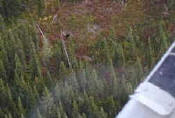 While
maneuvering, a bear is spotted in the trees, and he turned out to be
far easier to see than the aircraft wreckage.
While
maneuvering, a bear is spotted in the trees, and he turned out to be
far easier to see than the aircraft wreckage.
Meadow Creek Airport
|
|
|
